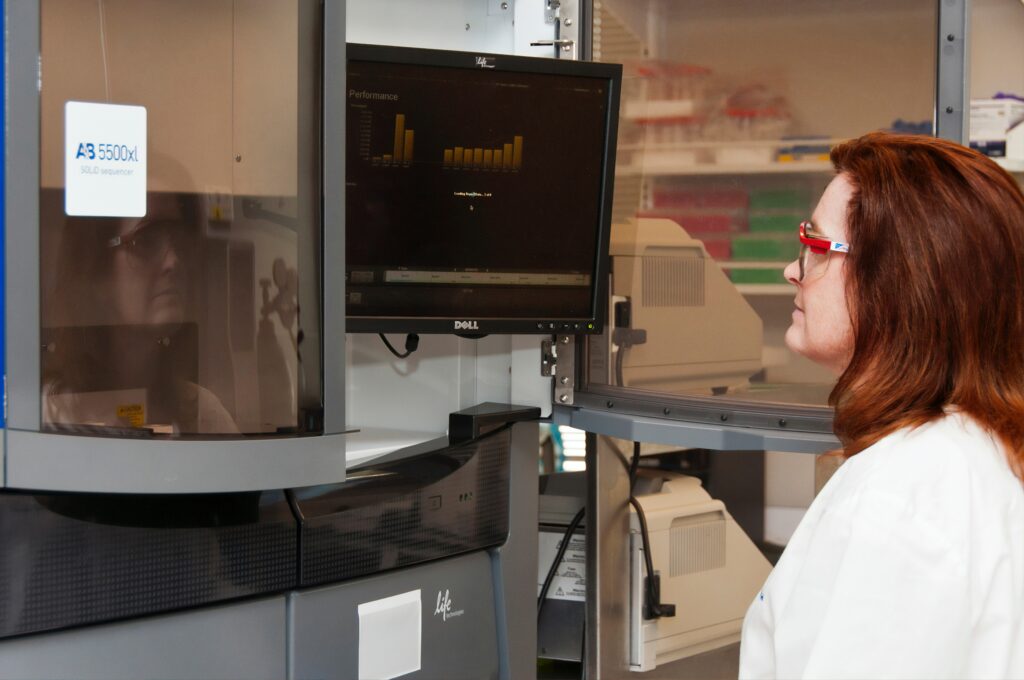In today’s data-driven world, businesses face the challenge of identifying unusual patterns, outliers, or deviations in their data. Anomaly detection methods provide a powerful solution to this challenge by detecting anomalies and enabling businesses to gain valuable insights, mitigate risks, and make informed decisions. In this comprehensive guide, we will explore various anomaly methods, their applications across different industries, and best practices for implementing them effectively.
Anomaly Detection Methods and Applications
Anomaly detection is a crucial task that involves identifying data points or patterns that deviate significantly from the expected behavior. Let’s dive into some of the prominent anomaly identification methods and their applications:
1. Time Series Analysis
Time series analysis methods are essential for detecting anomalies in sequential data points over time. Techniques such as ARIMA (Autoregressive Integrated Moving Average) and Exponential Smoothing can be used to identify anomalies in industries such as finance, energy, and cybersecurity. For example, these methods can detect abnormal stock market behavior or fraudulent transactions based on historical patterns.
2. Unsupervised Machine Learning
Unsupervised machine learning techniques play a significant role in anomaly. The Local Outlier Factor (LOF) algorithm is a popular approach that measures the local density deviation of a data point compared to its neighbors. LOF can identify anomalies in domains like network traffic analysis, credit card fraud detection, and sensor data monitoring.
3. Deep Learning
Deep learning models, particularly neural network-based architectures, have shown promise in detection tasks. Autoencoders, a type of neural network, are often used for unsupervised anomaly detection. By training an autoencoder on normal data, it learns to reconstruct the input, and instances that cannot be accurately reconstructed are flagged as anomalies. This approach has been successful in detecting anomalies in image data, cybersecurity, and industrial systems.
4. Ensemble Methods
Ensemble methods combine multiple anomaly detection algorithms to improve detection accuracy and robustness. One widely used ensemble approach is the Isolation Forest, which constructs multiple isolation trees to isolate anomalies. It has been applied in fraud detection, network intrusion detection, and outlier identification in high-dimensional data.
5. Domain-Specific Methods
Certain industries require specialized anomaly detection methods tailored to their unique data characteristics. For instance, healthcare relies on anomaly for early disease detection or monitoring patient conditions. Domain-specific techniques, such as outlier detection in medical images or detection in electronic health records, have been developed to address these specific challenges.
6. Evaluation Metrics
To assess the performance of anomaly detection methods, various evaluation metrics are used. Common metrics include Area Under the Receiver Operating Characteristic Curve (AUROC) and Precision at N (P@N). AUROC measures the trade-off between the true positive rate and false positive rate, providing an overall performance measure. P@N evaluates the precision of detecting the top N anomalies, which is particularly useful when ranking anomalies by severity.
Implementing Anomaly Detection Effectively

Implementing anomaly determination methods requires careful consideration and following best practices. Let’s explore the key steps to implement these methods effectively:
1. Understand Your Data
Before applying any detection method, gain a thorough understanding of your data. Analyze its characteristics, such as data distribution, dimensionality, and temporal aspects. Different anomaly detection methods are suited for different types of data, so understanding your data will help you select the most appropriate technique.
2. Feature Engineering
Feature engineering plays a vital role in anomaly detection. Identify relevant features that capture the essence of normal behavior in your data. Domain knowledge is valuable here, as it can help you select meaningful features that distinguish anomalies from normal instances. Additionally, consider transforming or normalizing features to ensure compatibility with the chosen detection method.
3. Establish a Baseline
Establishing a baseline of normal behavior is crucial for anomaly detection. This baseline represents the expected patterns or behaviors in your data. It can be constructed using historical data, expert knowledge, or statistical methods. By comparing new data against this baseline, you can identify deviations and detect anomalies effectively.
4. Selecting the Right Method
Given the diverse range of anomaly detection methods available, selecting the right one for your specific use case is essential. Consider the characteristics of your data, the desired detection accuracy, computational efficiency, interpretability, and the availability of labeled anomaly data. It may also be beneficial to experiment with different methods or ensemble approaches to find the most suitable one for your needs.
5. Validation and Fine-Tuning
Validating and fine-tuning your anomaly detection model is crucial for optimal performance. Split your data into training and validation sets, and evaluate the model’s performance using appropriate evaluation metrics. Tweak parameters, thresholds, or ensemble configurations to achieve the desired balance between false positives and false negatives. Iteratively refine your model to improve its effectiveness.
6. Real-Time Monitoring
For certain applications, real-time anomaly detection is crucial. Implement a monitoring system that can continuously analyze incoming data, detect anomalies promptly, and trigger appropriate actions or alerts. This enables proactive intervention and minimizes potential risks or damages caused by anomalies.
7. Continuous Learning
Anomaly detection models should be continuously updated and retrained as new data becomes available. Concepts of normal behavior may evolve over time, and new types of anomalies may emerge. Incorporate mechanisms for adaptive learning and model updates to ensure your detection system remains effective and up to date.
8. Collaboration and Feedback
Encourage collaboration between data scientists, domain experts, and stakeholders to gather valuable feedback. Domain experts can provide insights into contextual anomalies or contribute to refining anomaly detection rules. Regularly evaluate the performance of your detection system and gather feedback from end-users to drive continuous improvement.
Real-World Applications of Anomaly Detection

Anomaly detection methods find extensive applications across various industries. Let’s explore some real-world use cases where anomaly plays a crucial role:
1. Fraud Detection in Financial Transactions
Anomaly detection is widely employed in the financial sector to identify fraudulent activities. By analyzing transactional data, anomaly algorithms can flag suspicious transactions that deviate from typical patterns. This helps financial institutions protect their customers from fraudulent activities such as credit card fraud, identity theft, or money laundering.
2. Network Intrusion Detection
In the realm of cybersecurity, anomaly is essential for detecting network intrusions and identifying malicious activities. By monitoring network traffic, abnormal patterns or deviations can be detected, indicating potential security breaches. Anomaly aids in real-time threat detection, enabling swift response and safeguarding sensitive data.
3. Equipment Failure Prediction
Anomaly detection techniques are valuable in predictive maintenance scenarios, where the goal is to detect anomalies in equipment behavior to prevent costly failures. By continuously monitoring sensor data from machinery or industrial systems, deviations from normal operation can be detected early on. This proactive approach helps optimize maintenance schedules, minimize downtime, and reduce maintenance costs.
4. Healthcare and Disease Detection
In the healthcare domain, anomaly detection plays a critical role in detecting diseases or abnormalities in medical data. Detection methods are utilized in medical imaging analysis, patient monitoring, and early disease detection. By identifying deviations from normal patterns, anomalies can be indicative of potential health risks or conditions, enabling timely intervention and improved patient outcomes.
5. Quality Control in Manufacturing
Anomaly detection techniques are employed in manufacturing industries to ensure product quality and identify production issues. By analyzing sensor data, anomalies in the manufacturing process can be detected, such as deviations in temperature, pressure, or product characteristics. Early detection of anomalies helps optimize production efficiency, reduce waste, and maintain high-quality standards.
6. IT System Monitoring
Anomaly detection is vital for monitoring and managing IT systems. By analyzing system logs, network traffic, or user behavior, anomalies that indicate potential system failures, security breaches, or performance issues can be detected. Proactive detection allows IT teams to address these issues promptly, ensuring smooth system operations and minimizing disruptions.
Benefits of Anomaly Detection
Implementing anomaly detection methods offers numerous benefits to businesses across industries. Let’s delve into the key advantages:
Early Detection and Risk Mitigation
Anomaly identification enables businesses to detect anomalies early on, mitigating potential risks and minimizing their impact. By identifying deviations from normal behavior, businesses can proactively address issues, prevent financial fraud, avoid equipment failures, or respond to security threats promptly.
Improved Operational Efficiency
Anomaly detection helps optimize operational efficiency by identifying inefficiencies or abnormalities in processes. By analyzing data, businesses can identify bottlenecks, optimize resource allocation, and streamline operations. This leads to cost savings, improved productivity, and enhanced overall performance.
Enhanced Data-Driven Decision Making
Anomaly detection provides valuable insights that support data-driven decision making. By detecting unusual patterns or outliers, businesses can uncover hidden trends, identify emerging opportunities, or spot potential market disruptions. These insights enable informed decision making, giving businesses a competitive edge.
Increased Security and Fraud Detection
Anomaly detection is a powerful tool in enhancing security and detecting fraudulent activities. By monitoring data, businesses can identify anomalous behavior, unauthorized access attempts, or suspicious activities. This helps prevent financial fraud, safeguard sensitive data, and protect customers from potential security breaches.
Cost Savings and Resource Optimization
Through early detection, businesses can optimize resource allocation and minimize costs. By identifying equipment failures in advance, companies can schedule maintenance activities proactively, avoiding expensive downtime and reducing maintenance expenses. Furthermore, anomaly detection aids in optimizing inventory management and reducing waste.
Improved Customer Experience
Anomaly detection indirectly benefits customers by improving the overall experience. By identifying and resolving issues proactively, businesses can ensure smooth operations, minimize service disruptions, and deliver a consistent and reliable experience. This fosters customer loyalty and satisfaction.
Selecting the Right Anomaly Detection Approach
Choosing the appropriate anomaly detection method is crucial for achieving accurate and reliable results. Here are some considerations to keep in mind when selecting the right method for your specific use case:
1. Data Characteristics
Consider the nature of your data, such as its dimensionality, distribution, and type. Different anomaly detection methods are designed to handle specific types of data. For example, time series data may require specialized techniques, while high-dimensional data may benefit from algorithms that can handle the curse of dimensionality.
2. Label Availability
Determine whether labeled anomaly data is available or not. If labeled data is scarce or non-existent, unsupervised anomaly detection methods would be more suitable. On the other hand, if labeled data is available, supervised or semi-supervised approaches can be considered.
3. Interpretability
Consider the interpretability of the anomaly detection method. Some methods provide more transparent and interpretable results, allowing you to understand why certain instances are flagged as anomalies. This can be valuable for gaining insights and building trust in the detection process, especially in regulated industries or when human interpretability is crucial.
4. Scalability and Efficiency
Assess the scalability and computational efficiency of the anomaly detection method, especially if you are dealing with large-scale datasets. Some methods may be computationally expensive or may not scale well to big data scenarios. It’s important to choose a method that can handle your data volume and processing requirements efficiently.
5. Robustness to Noise and Outliers
Consider the robustness of the anomaly detection method to noise and outliers present in your data. Some methods are more resilient to noisy data, while others may be sensitive to outliers. Understanding the characteristics of your data and the method’s ability to handle noise and outliers is crucial for accurate anomaly detection.
6. Algorithmic Diversity and Ensemble Approaches
Explore the diversity of algorithms available for anomaly detection. Different methods may have strengths and weaknesses depending on the data and anomalies you are targeting. Consider utilizing ensemble approaches, where multiple detection methods are combined, to improve overall detection performance and robustness.
7. Evaluation and Validation
Once you have selected a detection method, it’s important to evaluate and validate its performance. Utilize appropriate evaluation metrics such as precision, recall, F1-score, or area under the ROC curve (AUROC) to assess the method’s effectiveness. Validate the model using a separate validation dataset or through cross-validation techniques.
Challenges and Future Directions

While anomaly detection methods offer valuable insights and benefits, they also come with their own set of challenges. Understanding these challenges and considering future directions can help overcome limitations and drive innovation in anomaly detection.
Imbalanced Data
Imbalanced datasets, where anomalies are rare compared to normal instances, pose challenges for detection. Traditional evaluation metrics may not accurately reflect performance in imbalanced scenarios. Addressing this challenge requires exploring techniques such as oversampling, undersampling, or utilizing advanced anomaly scoring methods.
Concept Drift and Evolving Anomalies
As data evolves over time, the concept of what constitutes normal behavior may change, and new types of anomalies may emerge. Anomaly detection methods need to adapt to evolving patterns and be capable of detecting emerging anomalies. Continual learning and adaptive modeling techniques can help address this challenge.
Interpretability and Explainability
As anomaly detection methods become more complex, interpretability and explainability become crucial for gaining trust and understanding the detection process. Future directions involve developing methods that provide transparent explanations for anomaly detections, allowing users to comprehend the underlying factors contributing to the anomalies.
Integration with Automated Systems
Integrating anomaly detection methods seamlessly with automated systems and decision-making processes is an area of ongoing research. The ability to detect anomalies in real-time and trigger automated actions or alerts can significantly enhance operational efficiency and response time.
Unsupervised Learning and Novelty Detection
Advancements in unsupervised learning and novelty detection techniques hold promise for improving anomaly detection. These approaches focus on detecting novel or previously unseen anomalies without relying on labeled data. Expanding the capabilities of unsupervised methods can enable detection in situations where labeled anomalies are scarce.
Domain-Specific Anomaly Detection
Further research and development are needed to tailor anomaly detection methods to specific domains or industries. Customizing algorithms and techniques to the unique characteristics and requirements of different sectors, such as healthcare, finance, or manufacturing, can lead to more accurate and reliable anomaly detection.
Conclusion
In conclusion, anomaly detection is a vital component of modern data analytics. By leveraging anomaly detection methods, businesses can gain a competitive edge, mitigate risks, and optimize operations. The journey towards effective anomaly detection involves understanding the unique needs of the business, selecting the appropriate methods, addressing challenges, and embracing future advancements. With the right approach, organizations can unlock the full potential of their data and drive sustainable growth in today’s dynamic and evolving landscape.
Remember, the key to successful anomaly detection lies in continuous learning, adaptation, and staying at the forefront of technological advancements. Embrace the power of anomaly detection, and embark on a journey to discover valuable insights hidden within your data.
Now that you have a comprehensive understanding of anomaly detection methods, their benefits, challenges, and future directions, you are equipped to make informed decisions and drive meaningful change within your organization. Continue to explore the possibilities, innovate, and leverage the power of anomaly detection to unlock new opportunities and drive success.
Ready to harness the power of anomaly detection and unlock valuable insights within your data? Visit AIDataHouse.com today to learn more about our cutting-edge anomaly identification solutions and how they can drive growth and optimize your business operations. Don’t miss out on the opportunity to gain a competitive edge in today’s data-driven world. Take the first step towards enhanced decision-making and risk mitigation by exploring our services and reaching out to our expert team.










